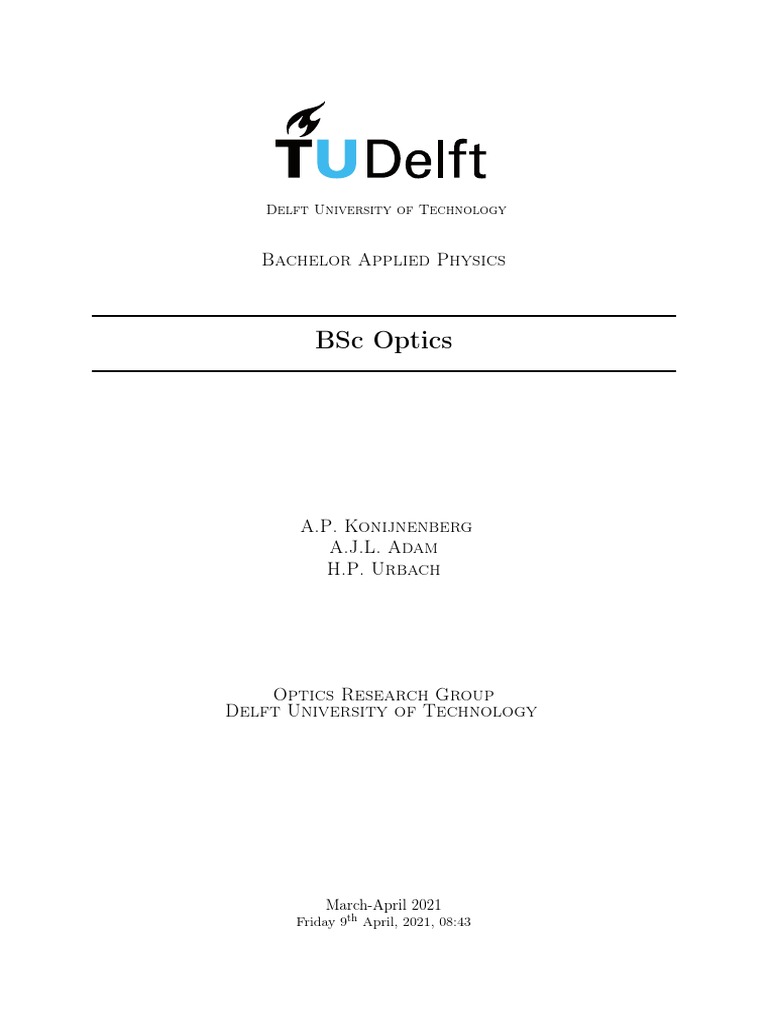Embarking on the journey of learning optics is akin to wielding a prism, refracting light to unveil a spectrum of understanding that transcends mere observation. In the realm of physical sciences, optics stands profoundly at the crossroads of theory and application, making it essential for disciplines ranging from physics and engineering to medicine and environmental science. Selecting the best book to learn optics is tantamount to choosing a guide before venturing into a labyrinth—what you select will significantly shape your academic pilgrimage.
The art of optics engages with the behavior of light, heralding its dual nature as both a wave and a particle. This intricate dance of photons invites learners to delve into principles that govern geometrical and physical optics, stimulating curiosity. Among the multitude of texts available, one book consistently emerges as a quintessential companion for aspiring optics enthusiasts: “Optics Book v3.” This text is a veritable treasure trove, seamlessly weaving empirical rigor with engaging narrative, and stands out in both its clarity and depth.
1. Comprehensive Coverage of Fundamental Concepts
At the heart of any reputable optics text lies a robust exposition of foundational concepts. “Optics Book v3” embraces this tenet wholeheartedly, providing a meticulous roadmap that traverses the essential principles of reflection, refraction, and lens optics. The initial chapters serve to acclimate readers to the core tenets, laying the groundwork required for more complex topics. This pedagogical approach unveils the interconnectedness of optics with other branches of physics, including electromagnetism and quantum mechanics, thereby enhancing the depth of understanding.
2. Engaging Visual Illustrations
In the study of optics, visual representations are indispensable. “Optics Book v3” excels in this regard, integrating high-quality illustrations that elucidate complicated phenomena with remarkable efficacy. Each diagram acts as a guiding light, illuminating the path through theoretical constructs and mathematical intricacies. Whether examining the formation of images through convex and concave lenses or analyzing the behavior of light in mediums of varying refractive indices, the visuals embedded within the text augment comprehension, marrying theory with tangible insight.
3. Mathematical Foundations with Clarity
The marriage of mathematics and physics is most poignant in the realm of optics, where equations serve as the lingua franca of understanding. The book adeptly navigates this mathematical landscape, rendering complex equations approachable and digestible. Each mathematical derivation is contextualized within practical examples, allowing readers to appreciate not only the ‘how’ but also the ‘why’ behind various optical phenomena. An adept learner, therefore, will find that “Optics Book v3” demystifies the mathematical challenges that often deter students from engaging deeply with the subject.
4. Integration of Practical Applications
While theoretical understanding is crucial, the true allure of learning optics lies in its myriad applications in the real world. The text’s ability to bridge theory with practice cannot be overstated. From fiber optics that enable contemporary telecommunications to the intricate workings of optical instruments in medical diagnostics, “Optics Book v3” captures the essence of how optics permeates daily life. Desire to learn further enhances when one recognizes the tangible impacts of these principles, fostering an environment of inquiry and exploration.
5. Contemporary Relevance and Innovations
In a field that continually evolves, staying abreast of contemporary developments is vital. “Optics Book v3” rises to this challenge, incorporating discussions on cutting-edge innovations such as optical computing, advancements in imaging technology, and the burgeoning field of photonics. This forward-thinking approach not only underscores the relevance of optics in modern technology but also ignites a spark of inspiration in readers, who may be future leaders in scientific research and innovation.
6. Diverse Learning Pedagogy
Recognizing that learners possess varied preferences and aptitudes, “Optics Book v3” embraces a multifaceted pedagogical strategy. The inclusion of problem sets at the end of each chapter affords opportunities for individual exploration and reinforces learning through practice. Additionally, the text encourages collaborative inquiry, making it an excellent resource for educators seeking materials that promote active discourse in the classroom. As learners wrestle with concepts through tangible application, they begin to appreciate optics not as a distant theoretical discipline but as a vibrant field alive with possibilities.
7. Rich Historical Context
Finally, no exploration of a scientific discipline is complete without an appreciation of its historical evolution. “Optics Book v3” imbues the study of light with a rich narrative of discovery, tracing the lineage of optical theories and innovations from ancient civilizations to contemporary advances. This historical lens enriches the reader’s experience, providing context that deepens appreciation for the scientific giants whose work laid the foundation for modern optics.
In conclusion, as practitioners of the art and science of understanding light, students and enthusiasts alike will find that “Optics Book v3” serves as an invaluable navigational tool in the vast ocean of optics. With its thoughtful integration of theory, visual assistance, practical application, and historical context, it not only educates but inspires, illuminating the path forward in both academic and practical realms. The world of optics is as diverse and kaleidoscopic as the light it studies, and within its pages lies the key to unlocking the innumerable mysteries it holds.










